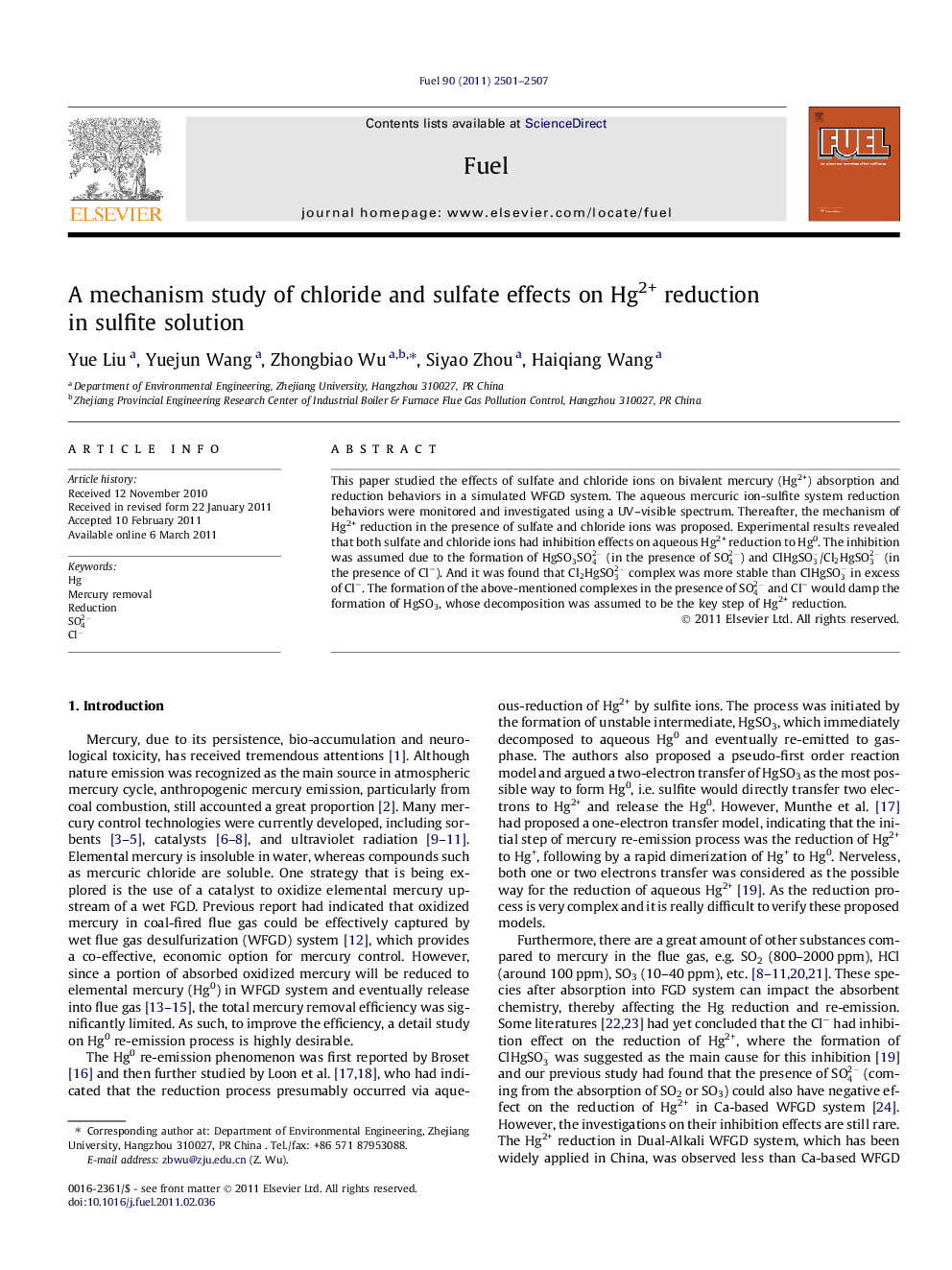| Article ID | Journal | Published Year | Pages | File Type |
|---|---|---|---|---|
| 206518 | Fuel | 2011 | 7 Pages |
This paper studied the effects of sulfate and chloride ions on bivalent mercury (Hg2+) absorption and reduction behaviors in a simulated WFGD system. The aqueous mercuric ion-sulfite system reduction behaviors were monitored and investigated using a UV–visible spectrum. Thereafter, the mechanism of Hg2+ reduction in the presence of sulfate and chloride ions was proposed. Experimental results revealed that both sulfate and chloride ions had inhibition effects on aqueous Hg2+ reduction to Hg0. The inhibition was assumed due to the formation of HgSO3SO42- (in the presence of SO42-) and ClHgSO3-/Cl2HgSO32- (in the presence of Cl−). And it was found that Cl2HgSO32- complex was more stable than ClHgSO3- in excess of Cl−. The formation of the above-mentioned complexes in the presence of SO42- and Cl− would damp the formation of HgSO3, whose decomposition was assumed to be the key step of Hg2+ reduction.
► Both sulfate and chloride had inhibition effects on Hg2+ reduction. ► The formation of HgSO3SO42- was the main reason for reduction inhibition by sulfate. ► The Cl2HgSO32− was the main cause of reduction inhibition with chloride, rather than Cl2HgSO3-. ► The key step of Hg2+ is the decomposition of HgSO3.
